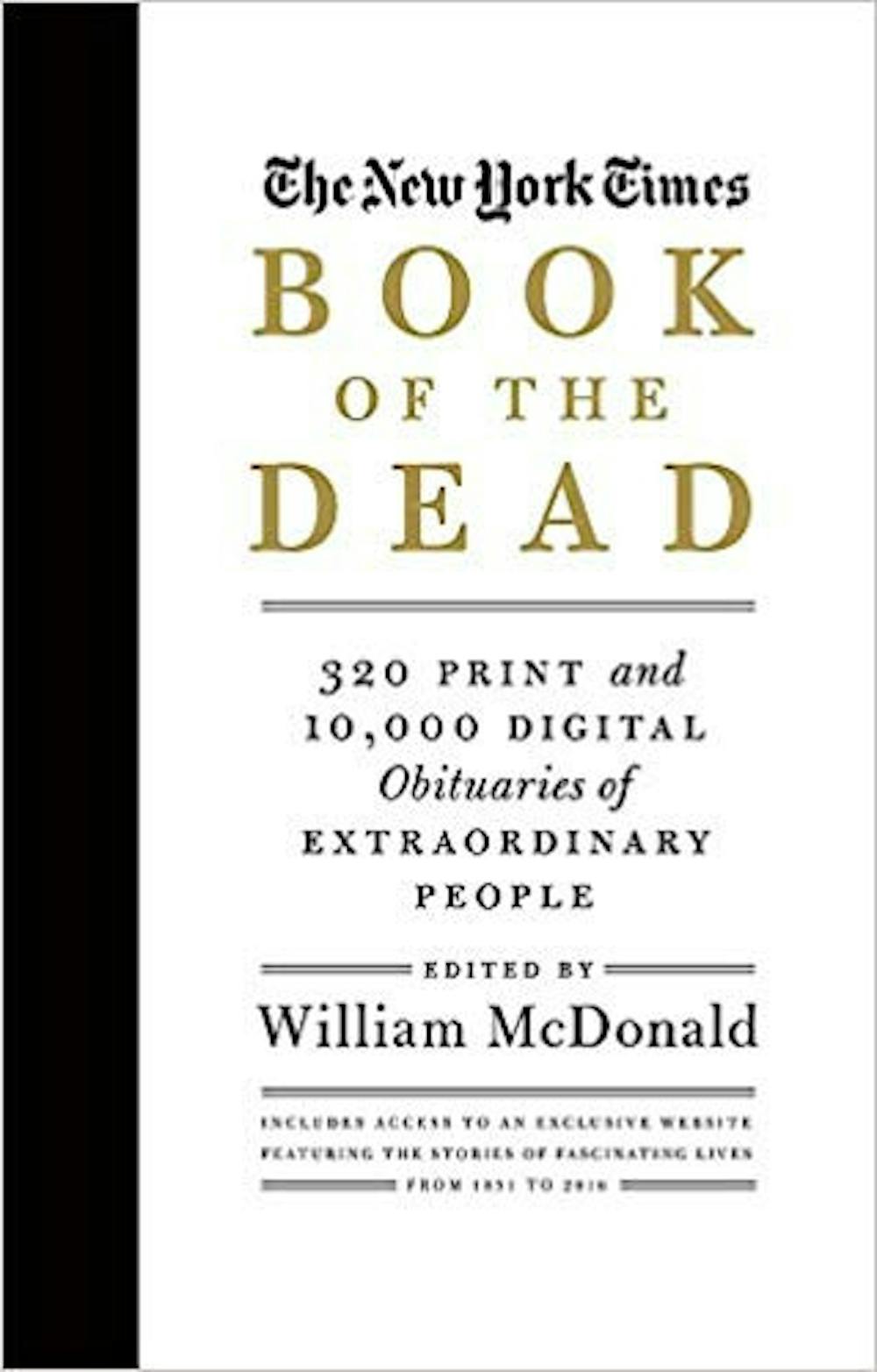[pullquote speaker="" photo="" align="center" background="on" border="all" shadow="on"]The New York Times’ “Book of the Dead: 320 Print and 10,000 Digital Obituaries of Extraordinary People” Edited by William McDonald [/pullquote]
As the title suggests, this massive work is a collection of over 10,000 obituaries that cover the lives of entertainers, politicians, justice seekers (“Champions of the Cause”) and more. Divided into 16 chapters and accompanied by an index ordered by name, the print portion of this text groups people by the industries they served while living and the causes they took up. Businesspeople like industrialist Henry Ford and tech visionary Steve Jobs are grouped together, for example, as are writers like poet Walt Whitman and Harper Lee, author of “To Kill A Mockingbird.” Each chapter is ordered by the chronological date of the featured person’s death, earliest to latest. So, track and field Olympian Jesse Owens (1913- 1980) appears before boxer and political activist Muhammad Ali (1942- 2016).

An unique feature of this book is that 320 historical figures are featured in print and 10,000 (!) are included on a web key (a pen/USB/thumb drive) found within the front cover of the book. Once the drive is plugged into a USB port on a computer, the user is prompted to register an email address to access the thousands of obituaries (“obits”) that are available in digital format. They can be browsed, too, within 40 categories like “Architects,” “Explorers,” “Fashion,” Food” and “Nobility.” When I searched “Julia Child,” a world renowned culinary figure and author of “My Life In France,” I found that she didn’t like grilled vegetables or think much of Mexican food. We would not have been friends.
While flipping through the pages of the print text, I first visited profiles like Harriet Tubman’s and Malcolm X’s, two prominent figures in the fights for racial freedoms in the United States. Then I went to the stars of the small and big screens like Lucille Ball and Marlon Brando. “I Love Lucy” was one of the first sitcoms I ever watched and it introduced me to countless themes of gender and an expert comedienne whose skill remains hard to match. I was curious about Brando because whispers and murmurs of his sex appeal still linger in conversations about Hollywood and I wanted to know what the hype was all about. I read of Dred Scott whose freedom was argued at the Supreme Court; Thomas Gallaudet who founded a school for the deaf in Washington, D.C.; and of Althea Gibson, a figure of whom I’d never heard before, who was “Serena Williams” before there was a Serena Williams.
This “Book of the Dead” can serve as a trivia tool that provides quick information on major figures from the past, particularly those from the 20th century, and as a potential research tool for those seeking brief profiles on the famous or how to write a posthumous account of a deceased person’s life. However, the work is as interesting for what it does include as for what it doesn’t. For example, of the 320 people appearing in print, about 43 represent women. That’s less than 15 percent. Moreover, I don’t think one of the 320, male, female or trans, is Asian American. Why might that be? Also, there’s no chapter dedicated to scientists. The likes of these are perhaps found under the sections entitled “American Leaders” and “Thinkers.” Why? This sort of lens, one that allows for questioning what is there and what isn’t tells users of the text what the United States and the New York Times (NYT) has historically considered “noteworthy” and “remarkable.” It makes one ask the question, “How many people whose lives were especially meaningful never made it to the NYT obits? What were the criteria for determining which figures would appear in print? How come so many are male? As an information worker who is constantly at the task of treating issues of representation, the text is rather compelling.
Let me share an appropriately self-aware excerpt from the introduction: “One will notice that most of the people who appear in these pages are white and male… the bias is undeniable, and it, too, is historical: It reflects the prejudices and injustices of an early era…one must inevitably draw from those who controlled the levers of power, and that group, as we know, was composed mostly of white men.” Moreover, some important figures never made it to the NYT obits because they gained their fame posthumously.
So, if you’re looking for an exhaustively comprehensive text, it’s not this one. But if you’re into “Old Hollywood,” I recommend you take a gander. For other works that study yesteryear, check out the Davis Family Library’s “Lies My Teacher Told Me: Everything Your American History Textbook Got Wrong” by James W. Loewen; “A People’s History of the United States”-by Howard Zinn; “An African American and Latinx History of the United States” by Paul Ortiz, none of which I have read — yet.
Literatures & Cultures Librarian Katrina Spencer is liaison to the Anderson Freeman Center, the Arabic Department, the Comparative Literature Program, the Gender, Sexuality & Feminist Studies (GSFS) Program, the Language Schools, the Linguistics Program and the Department of Spanish and Portuguese.




